- About Us
- Bearings
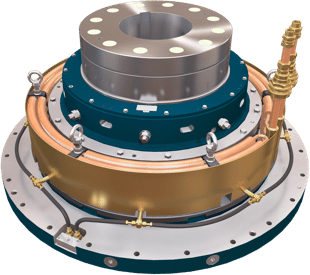 Vertical Bearings
Vertical Bearings
- AV Series
AV
LV SeriesLV
MV SeriesMV
V SeriesV
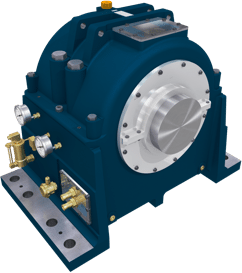 Horizontal Bearings
Horizontal Bearings
- HD Series
HD
IH SeriesIH
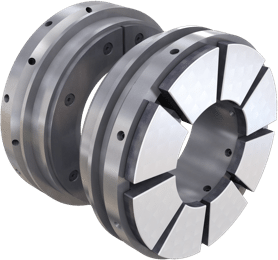 Tilting Pad Bearings
Tilting Pad Bearings
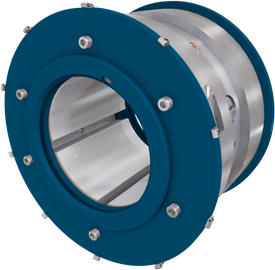 Journal Bearings
Journal Bearings
- Journal Pad Units
Journal
 Thrust Bearings
Thrust Bearings
- SE Series
SE
Omega EqualisedOmega
OmegaOmega
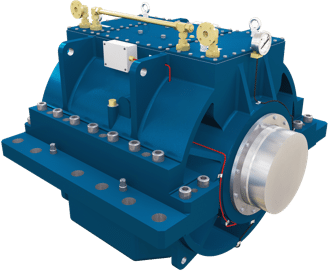 Marine Bearings
Marine Bearings
- Marine Gearbox Internals
Marine
Marine Propulsion Motor
and Generator BearingsEnter your email to download the full paper
"*" indicates required fields
Outline
Home > Hydrodynamic Bearings Robust Design Ensures SuccessHydrodynamic Bearings Robust Design Ensures Success
Dixon SJ and Humble G, Michell Bearings, UK
When Michell and Kingsbury successfully applied their solution to Reynold’s equation, the tilting pad bearing came into existence. The design was simple and elegant and offered significant performance advantages to users. Whitemetal (Babbitt), a material conceived in the 19th Century, was utilised as a sacrificial lining.
Today, more than 100 years on, the same fundamental concept appears to be going strong. Over the years, robust designs have prevailed and designers have enhanced their products and improved performance. Materials have also improved and alternative linings to whitemetal have emerged. Fluid film bearings are well established across a huge variety of applications, many with demanding operating and environmental conditions.
The authors look at some of the successful designs that have become commonplace, how designs have progressed and how lining materials have evolved. Finally, some recent bearing developments are reported and conclusions are drawn about the requirements of plain bearings in the future.
Introduction
Albert Kingsbury and Anthony George Malden Michell are each credited independently with the invention of the tilting pad bearing. Kingsbury’s US patent was granted in 1910 [1] whilst Michell’s thrust bearing patent [2] was granted in 1905 and his journal bearing patent [3] in 1912. The Michell patents describe the idea of a series of segmented bearing ‘blocks’ each pivoted on the back so that “the film of oil between each block and the surface on which it bears may be more compressed or constricted at the rear end than at the front or leading end of the block, a condition which favours the entry of the oil between the surfaces at the leading end.” Figure 1 shows an illustration from Michell’s 1905 patent.
It is not until one compares the tilting pad bearing to the technology of the time that one appreciates the significance of the invention. Prior to the tilting pad invention, bearings were characterised by unreliability and unpredictable lifespans. A very clear example of this is thrust blocks which absorb the thrust from the propeller of ocean going vessels. In the 19th century marine thrust block designs utilised multi-collar technology and, for at least one merchant liner, 22 collars were required to transmit the thrust onto the flat bronze counter-faces [4]. Balancing the load so that each thrust element carried equal load was particularly problematic and continual adjustment was required. In addition, high power losses were inherent with the multi-collar design. Figure 2 shows a photograph of a typical design and illustrates the complexity of the arrangement. In contrast, Figure 3 depicts the equivalent, circa 1916, Michell tilting pad thrust block design for the same duty. The design utilises a single collar thus reducing the complexity and lowering power losses whilst, simultaneously, allowing significantly larger loads to be transmitted. The immediate impression is that the Michell design is much simpler resulting in installation benefits and much lower maintenance requirements. It was estimated that the Royal Navy saved £500,000 GBP worth of coal in 1918 alone as a result of fitting Michell’s tilting pad bearings [5].
ACCESS FULL PAPERRecommended articles
Developments in Hydro Generator Thrust Bearings
Measurements of Maximum Temperature in Tilting-Pad Thrust Bearings
Like for Like Performance Comparison of PEEK and PTFE Thrust Bearings for use in Vertical Pump and Motor Applications
Developments in PTFE Faced Thrust Bearings for use in Vertical Pump Applications
Michell Bearings
Waldridge Way,
Simonside East Industrial Park,
South Shields,
NE34 9PZ.Tel: +44 (0) 191 273 0291
Email: sales@michellbearings.com
Email: hrteam@britishengines.com
Email: recruitment@britishengines.com© Michell Bearings.
Registered Office Address: 11 Glasshouse Street, St Peter's, Newcastle upon Tyne. NE6 1BS. Company registered in England and Wales no. 9390648

 PTFE Bearings
PTFE Bearings